Welcome to the latest issue of the AI Community Learning Series – where we explore how AI is reshaping product strategy and decision-making. In our recent session, Abi Awomosu shared insights on how product builders can move beyond traditional market research and use AI to uncover real, high-impact growth opportunities. If you missed it, catch the replay and slides.
Here are the five key takeaways from our discussion. 👇
1. Execution is No Longer Enough—Market Sensing is Key
The speed of execution has long been considered a competitive advantage, but today’s landscape is different. With AI reducing technical barriers, anyone can build—but that doesn’t mean they’re building the right thing. Instead of prioritizing speed, companies must first prioritize market sensing—understanding customer needs and identifying signals before committing to development.
Companies that fail to adapt to this shift often spend months developing solutions that don’t resonate with their intended market. By incorporating AI-driven research early in the process, teams can identify potential blind spots, surface unmet needs, and design products that have a higher probability of success.
2. Reverse the Traditional Product Roadmap: Start with AI-Driven Listening
Most teams start with an idea, build quickly, and then test in the market. But what if you listened first? The Oracle Mode methodology flips the traditional approach, using AI-powered tools to analyze customer conversations, online behavior, and sentiment analysis to determine demand before launching a product. By leveraging AI to uncover unmet needs, teams can build products that resonate immediately, rather than iterating after launch.
This approach is particularly valuable in competitive industries, where entering the market with a well-differentiated product can mean the difference between thriving and struggling to gain traction. Instead of taking an inside-out approach (building first and then validating), AI enables an outside-in perspective, ensuring teams are responding to real customer pain points rather than assumptions.
Case Study: How a Fitness Tech Startup Found the Right Market Positioning
A hydration-focused wellness-tech company faced a critical challenge: should they compete in the water filtration market or position themselves in a broader wellness category? Instead of guessing, they used AI-powered listening tools to analyze customer reviews, social media discussions, and search trends.
AI revealed that their most passionate users weren’t just looking for clean water or to save the environment—they were seeking a performance-enhancing hydration experience. This insight led them to reposition as a premium hydration and wellness solution rather than a simple water filter. By aligning their messaging and product strategy with what the market actually needed, they unlocked a high-LTV audience and improved customer retention
This approach saved months of trial-and-error and ensured their product-market fit was validated before heavy marketing spend.
Additionally, the AI-driven insights helped the team test and refine their messaging across different marketing channels, ensuring their target audience resonated with the brand’s new positioning before launching large-scale advertising campaigns.
3. AI Helps Separate Signal from Noise in B2B Markets
In B2B, customer needs are often less visible than in consumer markets. Instead of relying solely on traditional sales feedback and customer surveys, AI-powered insights help teams identify hidden demand by analyzing industry discussions, conference talks, and niche forums. This approach ensures businesses don’t just follow trends—they anticipate them.
By leveraging AI-driven sentiment analysis and competitive intelligence, B2B teams can uncover what decision-makers are actively discussing and use that information to craft highly targeted solutions. AI helps businesses distinguish between fleeting industry buzz and genuinely pressing customer needs, allowing them to prioritize development efforts more effectively.
4. The Era of Static Market Research is Over—Continuous Discovery is the Future
Gone are the days of conducting market research once and relying on those insights for months or years. AI enables real-time market sensing, giving companies the ability to continuously monitor industry shifts, customer sentiment, and emerging trends. This ensures that product and marketing teams stay ahead of demand rather than reacting to it too late.
With AI-enabled market research, product teams can create always-on insight engines that aggregate and synthesize relevant industry data at scale. Instead of waiting for quarterly reports, companies can make incremental, data-backed adjustments to their product roadmaps based on ongoing feedback loops.
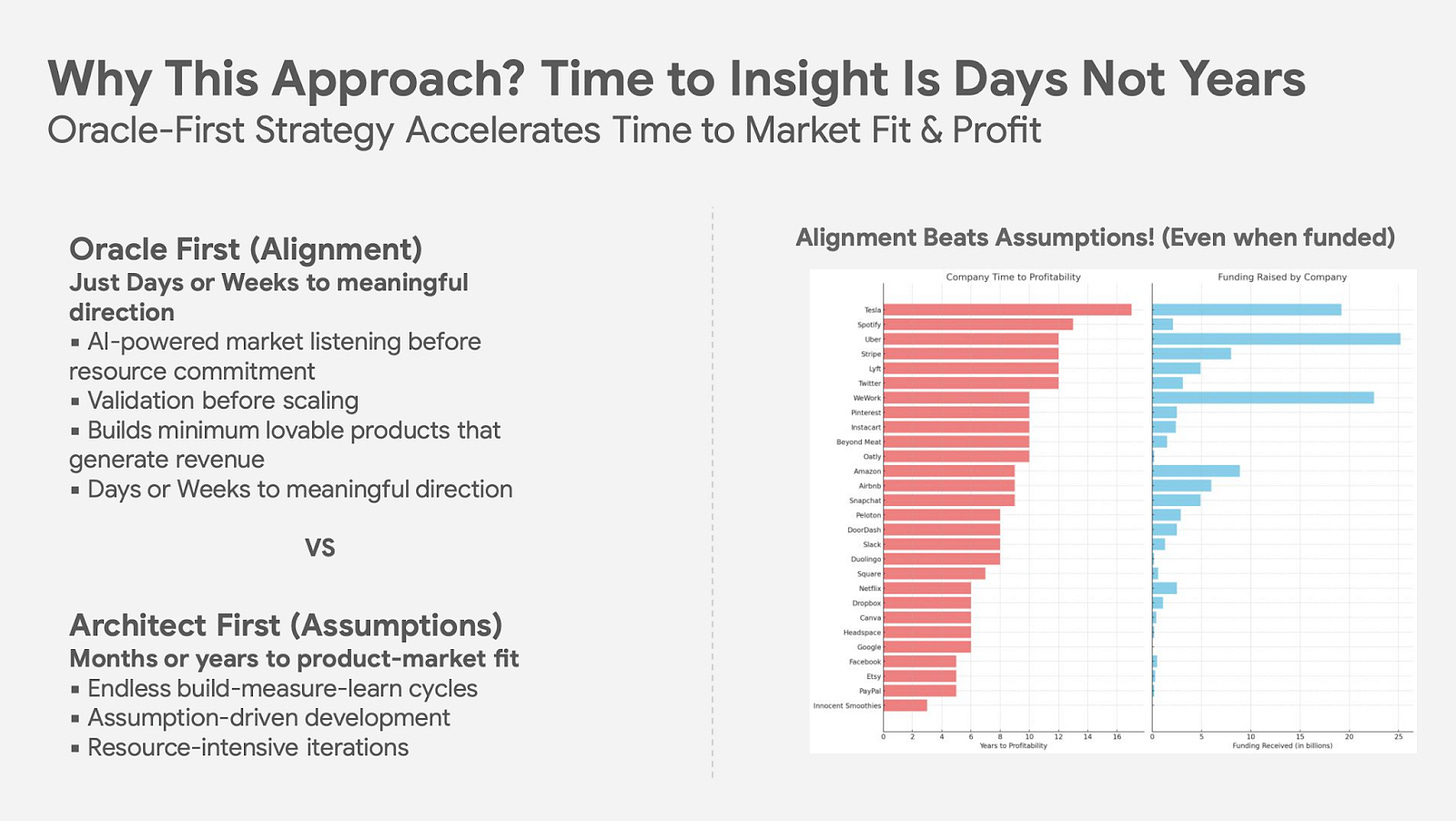
👉 Want to dive deeper?
Check out Abi’s Maven course, How to Use AI to Truly Understand Your Market and Customers in ways traditional research can't starting March 11, 2025 (Use code SHYVEE for $100 off!)
Upcoming Events
Thurs, Mar 6, 2025, 9:00AM - 9:30 AM Pacific Time (GMT-8)
👉 Sign up
Fri, Mar 14, 2025, 10:00 AM - 10:30 AM Pacific Time (GMT-8)
👉 Sign up
Tues, Mar 18, 2025, 8:00 AM - 8:30 AM Pacific Time (GMT-8)





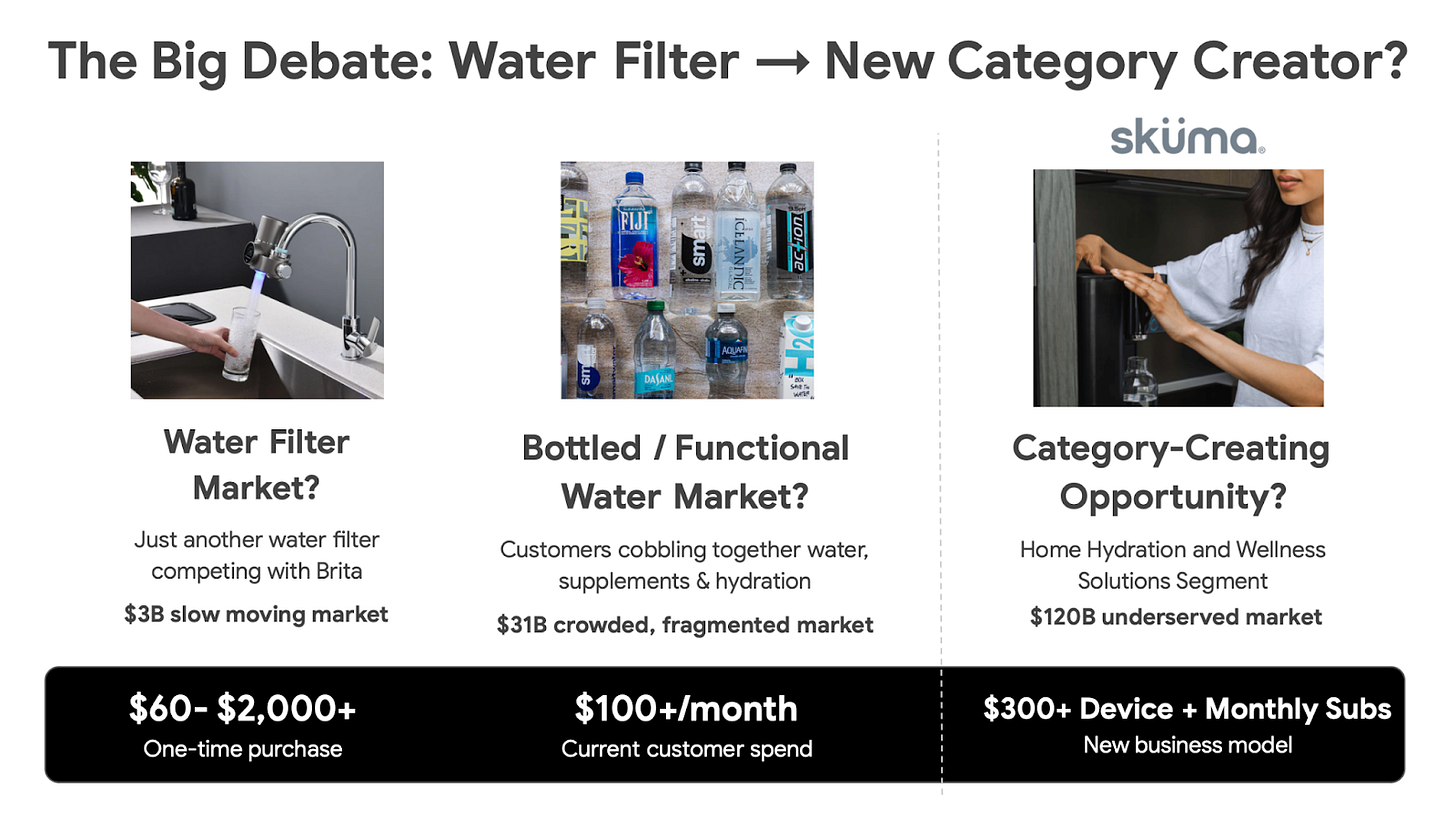

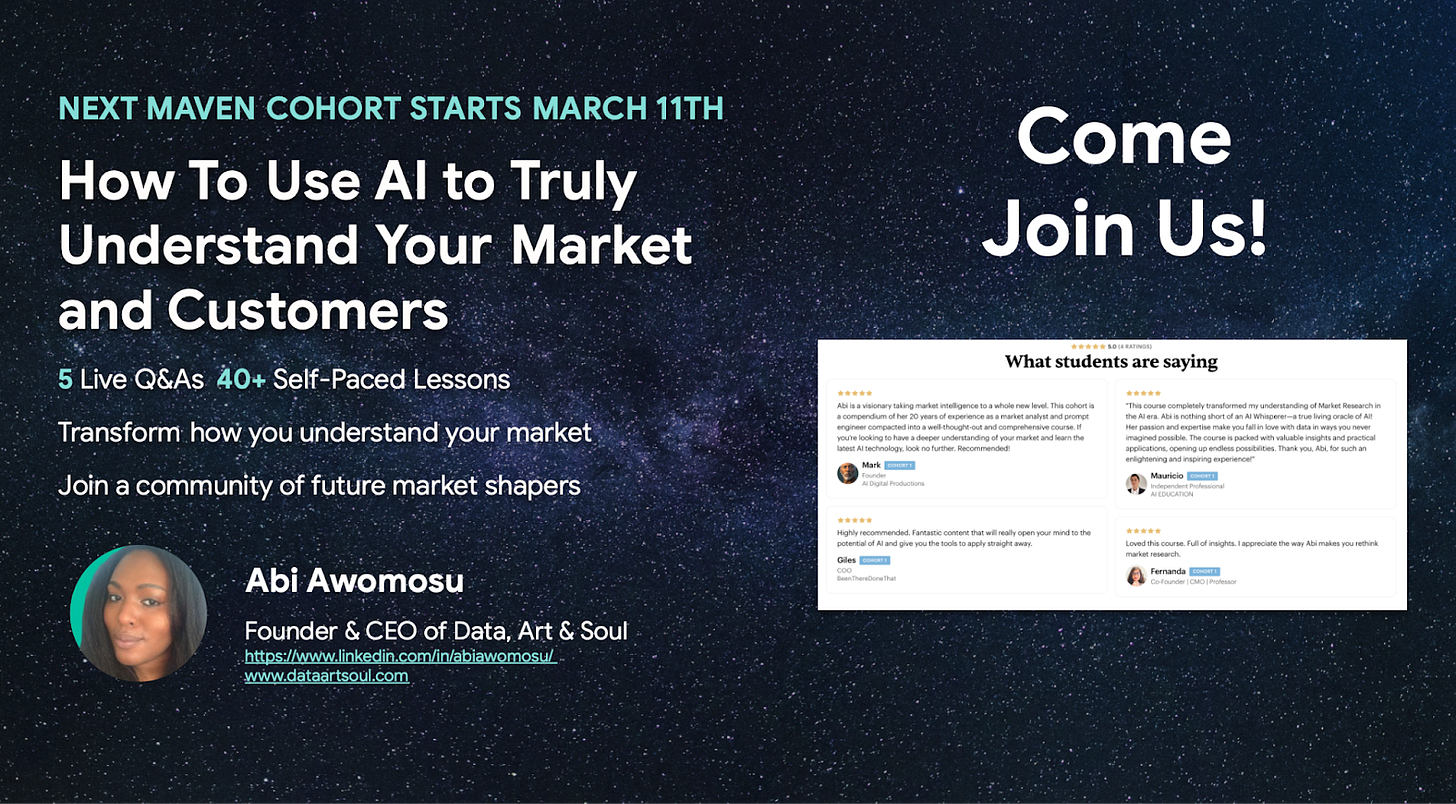
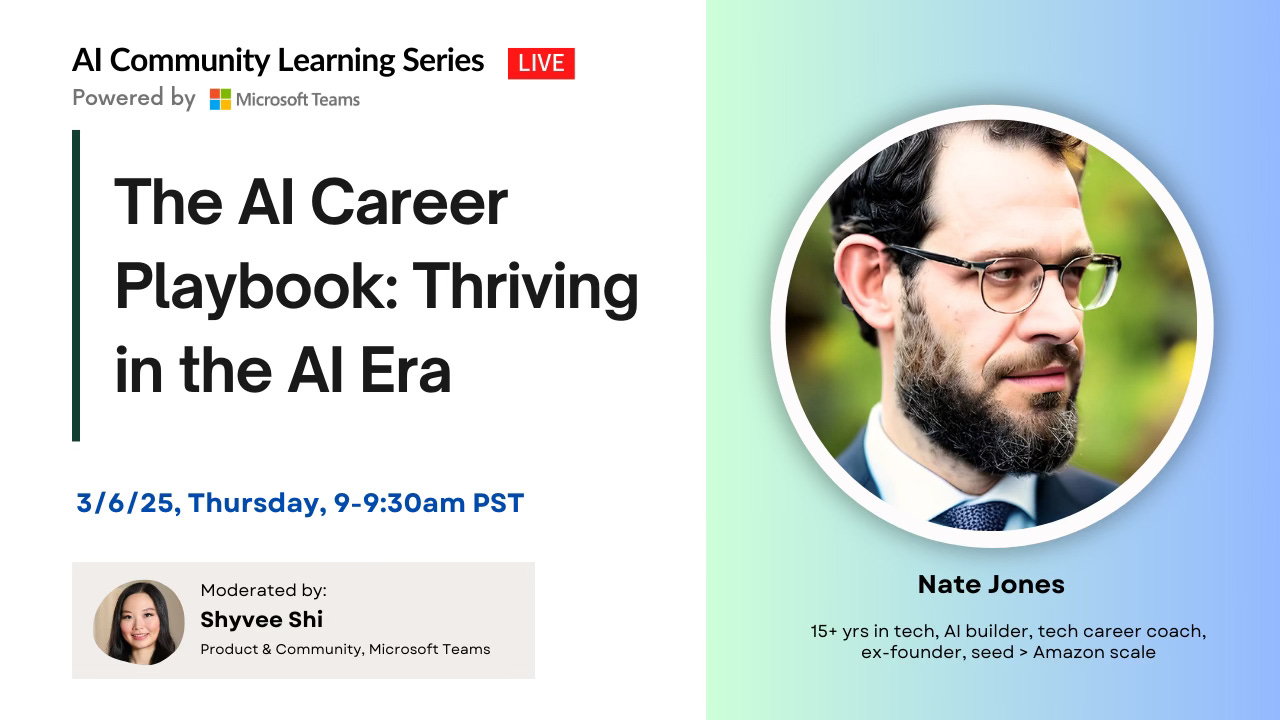

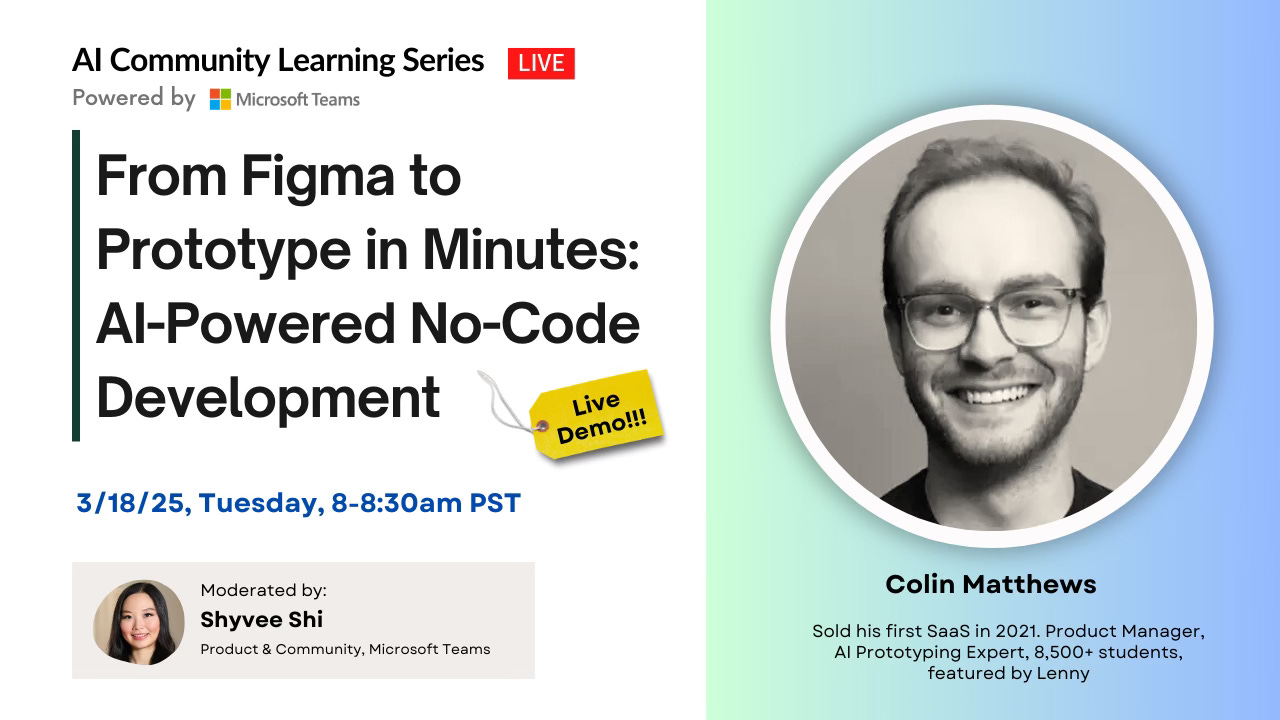
video AI models: do you know anyone who has used and can recommend any that are pre-trained and can be customized to recognize fashion and accessories? i am testing a couple but looking for ones you have called with an API or used a test demo environment for. thanks in advance!